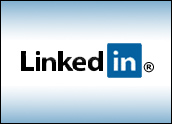
A social network makes changes to its privacy policy. Shortly thereafter, users are shocked to see their names and photos appear in in-house ads. For example, an ad promoting the services of a local printer might include the faces of three “followers” of that particular company. Is this Facebook privacy fail, episode 231,789?
Not quite. LinkedIn is the social network in question — the “serious” social network for business gladhanding and making connections. In short, it caters to people who do not take kindly to having their faces used to promote a brand or service.
After the ads rolled out, an uproar ensued, and LinkedIn beat a hasty retreat.
Now that ad for a printer is minus the three faces — instead it might simply mention that three people in the viewer’s network follow that particular company.
“The trust of our members is central to what we do, and we always aim for clarity, consistency and member control in all matters related to privacy and data,” Ryan Roslansky, LinkedIn’s director of product management, explained in a blog post.
LinkedIn did not respond to the E-Commerce Times’ call requesting comment for this story.
A Change in Policy
This flap began in June, when LinkedIn announced changes to its privacy policy — including an opt-out clause — ahead of the first wave of social ads it would be testing, Roslansky explained.
Countering accusations that LinkedIn tried to sneak these changes past its user base, Roslansky said the company also posted news of the ads on its blog and ran banner ads on the site that contained links to a summary of the changes and links from which members could access their account settings.
To opt out, he said, all a user had to do was go to the Accounts and Setting page, then, under privacy controls, find “Manage Social Advertising.”
Still, it became clear that some of its members were uncomfortable with the use of their names and photos in ads served to their network, he concluded, noting that “we could have communicated our intentions — to provide more value and relevancy to our members — more clearly.”
Professional Service
LinkedIn can perhaps be forgiven for its transgression. Facebook, after all, has pushed the envelope with user data far more egregiously.
LinkedIn, though, is no Facebook, said Keith Trivitt, associate director of public relations with the Public Relations Society of America.
Its “users very much still view the social network as a professional service,” he told the E-Commerce Times.
“They don’t see it — or apparently want to use it — as their go-to site for connecting with friends and acquaintances,” Trivitt said, “but rather, as a place to network and build their professional skills and contacts.”
No Heads Up
In addition, said Trivitt, LinkedIn violated a cardinal rule of customer relations: You must communicate clearly, transparently and proactively with them.
“Ultimately, customers want to be informed of corporate decisions that will either impact how they use a product or service or that take advantage of their data to generate profits for the company,” he said, “such as the case of the photo ads.”





















































Social Media
See all Social Media